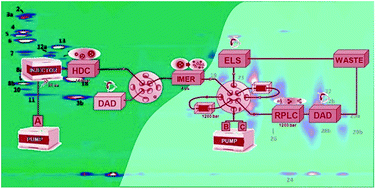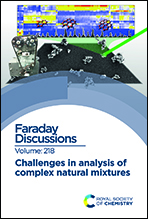Perspectives on the future of multi-dimensional platforms†
Abstract
Two-dimensional liquid chromatography (2D-LC) formats have emerged to help address separation problems that are too complex for conventional one-dimensional LC. There are a number of obstacles to the proliferation of 2D-LC that are gradually being removed. Reliable commercial instrumentation has become available and data analysis software is being improved. Detector-sensitivity and phase-system compatibility issues can largely be solved by using active-modulation strategies. The remaining challenge, developing good and fast 2D-LC methods within a reasonable time, may be solved with smart algorithms. The technology platform that has been developed for 2D-LC also creates a number of other possibilities. Between the two separation stages, all kinds of physical (e.g. dissolution) or chemical (e.g. enzymatic or light-induced degradation) processes can be made to take place, allowing a wide variety of experiments to be performed within a single, efficient and automated analysis. All these developments are discussed in this paper and a number of critical issues are identified. A practical example, the characterization of polysorbates by high-resolution comprehensive two-dimensional liquid chromatography in combination with high-resolution mass spectrometry, is described as a culmination of recent developments in 2D-LC and as an illustration of the current state of the art.

- This article is part of the themed collection: Challenges in analysis of complex natural mixtures


 Please wait while we load your content...
Please wait while we load your content...